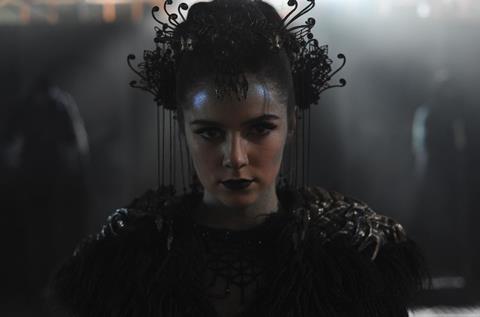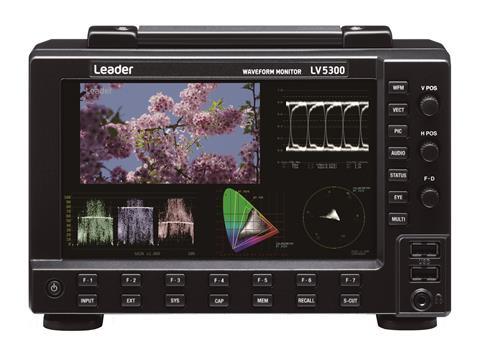Vendors are helping broadcasters to rise to the challenge of 4K/HDR production while maintaining best-quality for existing HD/SDR workflows.

Broadcast monitoring has always been something of a ‘moving target’, but that description has assumed new lustre in recent years due to an accelerating cycle of format and workflow changes.
The adoption of 4K/UHD has been strong and relatively predictable in certain areas of broadcast, notably sports, but the phenomenal take-up of HDR has arguably taken many observers by surprise.
Emboldened by the realisation that HDR can deliver very marked improvements for consumers, broadcasters are increasingly keen to add HDR to their workflows – but without incurring substantial additional costs or duplication of resources.
Given that multiple HDR standards are in the mix at this point, and the fact that premium prices for HDR content are largely restricted to streaming services such as Amazon and Netflix, guaranteeing a decent return on investment is easier said than done.
For monitoring and measurement vendors the onus is on providing solutions that can support 4K/UHD and HDR, as well as existing HD/SDR production. After all, it is likely to be the latter that still forms the bedrock of most broadcasters’ revenue streams for many years to come.

As Kevin Salvidge, European regional development manager at Leader Instruments, remarks: “HDR is the most significant development in television broadcasting since the transition from monochrome to colour back in the late 1960s.
”But while productions are clamouring to deliver HDR content, they must not forget that HD/SDR is the format that is paying the bills.”
Cost and support
The limited revenue opportunities related to HDR at present mean that “it is difficult to justify the additional expense of equipping a studio facility or OB truck with UHD TV/4K HDR reference monitors in every position.”
Leader’s response to this includes the Leader LV5600 waveform monitor and LV7600 and LV7300 rasterisers, all of which feature an HDMI display output as well as support for 2SI UHD TV/4K signals. “This means that UHD TV/4H HDR images can be displayed on existing HD/SDR monitors, significantly reducing costs,” says Salvidge.

In addition, the Leader ZEN series of five new test and measurement instruments – which was launched in 2018 to mark the company’s 65th anniversary – feature a 3G-HD-SDI display output. This allows the display output to be sent via the house router and displayed on any SDI monitor within a facility.
The ZEN series also addresses a need for operational and production staff to be able to monitor UHD TV/4K and HDR productions “without needing a detailed technical knowledge of waveform monitoring”, thanks to the inclusion of the CineZone HDR real-time false colour display.
In addition, all five products support Hybrid Log Gamma (HLG), Dolby PQ and Sony Slog-3, as well as Canon C-Log and Log-C HDR formats.
The complex outlook for broadcasters wishing to implement HDR is also an ongoing preoccupation of the Blackmagic Design EMEA team.

As Craig Heffernan, technical sales director, observes: “There is still uncertainty about what monitoring accurately for HDR means and requires, so we’re educating and working with customers on current HDR formats, delivery and what displays are available, and how to ensure their grade looks stunning on cinema screens or on new consumer 4K HDR televisions.”
Integral to this process is conveying an holistic approach to HDR production. “It’s important for users to understand that consideration for HDR delivery starts at acquisition, and the camera you choose is critical. You cannot create stunning HDR video if image detail and colour information are lost to heavily compressed or poorly sampled video.”
Heffernan highlights the HDR toolsets included in products such as the DaVinci Resolve editing solution, with Resolve 15 also offering support for Dolby Vision, whereby Resolve “can analyse the files directly in the software, rather than using Dolby’s own external hardware. Along with this [is] the new IMF delivery codec, which allows users to deliver files to Netflix delivery specs, including [those related to HDR].”

In terms of HDR monitoring the DeckLink Mini Monitor 4K offers playback for HDR clips. Its 6G-SDI and HDMI 2.0a connections support broadcast quality 10-bit YUV and 12-bit RGB video, along with the Rec. 2020 colour and support for HDR formats and metadata.
Blackmagic Design’s approach to UHD/4K production continues to be guided by the decision, taken “early on that we would build UHD format support into existing 1080 HD products, including those for monitoring and measurement, and provide customers with the choice of switching when needed,” says Heffernan.
“More importantly, it meant that we could assure customers that investing in 4K formats wouldn’t come with a premium attached, and they could test workflows or start to offer 4K content to their customers based around HD budgets and planning.”
‘Maintaining the look’
Another leading player, Tektronix, has responded to the format changes by adding 4K/HDR support to the PRISM hybrid IP/SDI monitor, WFM/WVR8000 series waveform monitors and rasterisers, along with the introduction of ITU-R BT. 2111 HDR colour bar test patterns to the SPG8000A sync pulse generator.

Application engineer Michael Waidson observes that “the challenge for broadcast customers is determining the correct levels for the various gamma curves used from the camera to transmission of HDR while maintaining the look for the existing SDR broadcast viewers.
Several strategies have been adopted by broadcasters to process the gamma curve from the camera while providing multiple outputs for HDR and SDR to the viewers, remembering that most customers are primarily watching the SDR feed.”
To assist broadcasters, Tektronix has introduced several graticules in either camera log, ST2084 Perceptual Quantizer (PQ) 10K and Hybrid Log Gamma (HLG), that allow operators and technical supervisors to check the video levels of these various gamma curves to ensure consistency across the multiple outputs.
Given the current diversity of formats informing the deployment of HDR, it is no surprise to discover that vendors are much concerned with the task of devising tools that allow broadcasters to switch between – and maintain consistency across – different formats.
For Tektronix, Waidson notes: “We have already started offering new tools to assist camera operators, technical supervisors and editors, such as the Stop Waveform display to assist [them] in getting a consistent look between the various HDR and SDR formats.
”[Also] we have added transfer functions that convert the input gamma of the signal to traditional ITU-R 709 display so that it is easier to visualise these low contrast and desaturated images from the various camera log and HDR formats into a more familiar traditional display.”
The extent to which HDR production is effectively implemented will depend in no small part on the availability of monitoring and measurement solutions that can be integrated into existing set-ups with the minimum of cost, time and training implications.
Fortunately, the signs are that vendors have fully grasped the unique challenges related to HDR and are already helping broadcasters worldwide to incorporate HDR – along with 4K/UHD – into their production workflows as seamlessly as possible.
























No comments yet